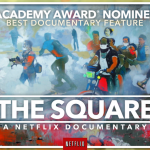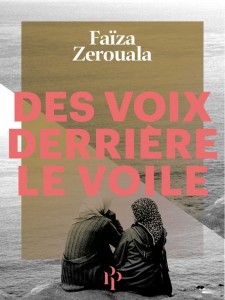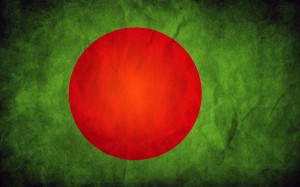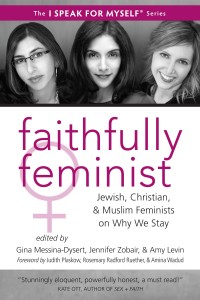I didn’t know what to expect when I first picked up Jennifer Zobair’s debut novel, Painted Hands.
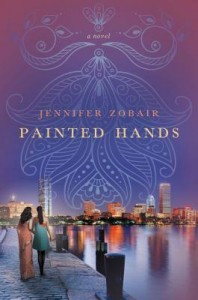
Chicklit isn’t really my thing — and it was sold to me as a “Muslim chicklit” — even though highly appraising endorsements found on the back cover call this novel, “a positive portrait of Muslim women” and an “important addition to the canon of ethnic fiction.”
I’ve never seen Sex In the City; when it comes to fiction, I’m more interested in sci-fi/fantasy, and I just wasn’t sure how much I could relate to a pair of high-flying, Prada-wearing, Boston-raised, and politically- and legally-minded “modern” Muslim characters.
Surprise! I loved it.
Within the first few pages, I was gasping in shock and gleefully gossiping with my sister-in-law over each experience, event, plot twist, and wonderfully terrible scandal as the book unfolded. As if these characters were like our own friends — and they probably could be. Zobair has not only created a collection of memorable characters, but she has also effortlessly represented almost every Muslim American community and popular media personality. It’s as if her novel presents a snapshot, a broad overview of the American Muslim community, from Muslim feminists, activists, and converts, to non-practicing Muslims, avid mosque-goers, and unruly mosque Uncles. She even name-drops a few modern famous Muslims to make the book more relatable to a present-day context.
The plot, about 30-something Muslim women trying to negotiate faith, love, and growing up in secular America while firmly routed in South Asian culture, focuses on the two main characters: Amra Abbas, a work-obsessed lawyer aiming for corporate partnership, and Zainab Mir, a fierce A-type personality with a knack for spinning strategic communications for a Republican political campaign runner. Their relationship with each other, their families and their faith are influenced by a cast of eclectic supporting characters: Mateen, Amra’s love interest and husband, struggles to balance his love for Amra with his own expectations of how a “good” Muslim wife should act; Chase Holland, a neo-con radio host and bigot who struggles after falling in love with Zainab; and Hayden Palmer, a party-girl headline stereotype who converts to Islam to spite the Muslim man who uses her for sex.
In her review, the Salafi Feminist nails the plot summary:
“There’s something for everyone in the narrative– Zainab is unabashedly secular, yet her brief brush with members of a local masjid reveals the hurt she feels at having herself, her work and even her sexuality openly judged and condemned by those who know nothing about her. Amra is both relieved and afraid to get married, in love with her fiancé but unable to confess the extent of her obsession with work; and, later, when she becomes a mother, struggles to know what she wants in comparison to the pressures of those around her. Chase Holland makes his living bashing Islam and Muslims, but finds that his bluster is harder to keep up around Zainab’s fiery challenges. Hayden takes her shahadah (declaration of faith) and is drawn into a circle of conservative immigrants, who briskly arrange her marriage and prod her into their own type of activism.”
There are indeed some wonderful things about Painted Hands, such as the engaging narrative and an interesting discussion on what it means for Muslim women to “carve out a third space” after being constantly asked to prove their loyalty to America while simultaneously being shunted into dingy basements by fellow Muslims. This is precisely how Zainab feels when political fallout from a terrorist attack has direct implications on her career because of her Muslim background. And after being judged by the Muslim community and excluded from the mosque, she feels she cannot sacrifice herself for people who wouldn’t do the same for her:
“…as tired as I am of America asking me to prove my loyalty, I am absolutely exhausted by Muslims. Why should I put myself out there, when they won’t do the same for me?… America has not forced me, yet, to pray in filthy, segregated basement rooms with the prayer piped in over the voices of screaming children… But Muslims have.”
Navigating these conflicting feelings eventually leads Zainab to realize that she’s creating a “third space” — a place where she can stand by her beliefs and not feel intimidated by either side. This leads her to join a woman-led, mix-gendered prayer — and while she has not prayed sincerely in decades, attending the prayer (spoilers!) has dire consequences for her personally. It was refreshing to have this side of the conversation laid out so openly, when as someone who is also “unmosqued,” I find myself frequently drowning in narratives that actively exclude women.
But I also felt that, as a broad overview of what it means to be a modern Muslim in America, a lot was missing from the book.
In all of the various representations of Muslim cultural and religious practices, I always got the impression that the definition of what it means to be an “American Muslim woman” was only championed by the two main characters — at the expense of others. So while we get to see Amra believing in God and fasting, and Zainab fiercely holding on to her Muslim identity despite her lack of practicing faith, it’s their experience of being Muslim that’s held up as a standard. Everyone else is either anti-West or so progressive they’re anti-religion.
Engagement with Muslim characters seems to be related only to their degree of “Muslimness” or their inability to fit into certain social circles because of negative stereotypes. Amra is both jealous of and horrified by a “conservative” cousin who wears full hijab and jilbab and refuses to leave the kitchen to join mixed-gender company. Mosque-goers at a halaqa are described as kind, yet intolerant, and later, another group is physically violent when protesting a women-led prayer. It’s as if glimpses of “traditional spaces” (ugh) are in constant battle with the main characters, who somehow represent the only way to find balance between secular America and Islam.
May Al-Ansari, the white feminist, Muslim convert hijabi scholar has a lot of last-minute, sound advice for Zainab — but while she’s held up as one type of ideal Muslim because she is progressive and covered, a scholar and a mother — she is also unfortunately portrayed as an object of desire when a man Zainab dates practically salivates over her. Perhaps this plot detail was simply to emphasize the stereotype that Muslim communities tend to value successful white converts — but I felt it took away from May’s character as a Muslim leader.
In fact, I found discussions on ethnicity to be largely surface, or reliant on common stereotypes. There is one brilliant and uncomfortable moment where race and Muslim stereotypes are briefly explored as Amra leaves a privileged white mommy’s social club, when the white mothers make egregious comments about Muslim Indian men being sexually repressed “horndogs” — a generalization she takes offence to, being married to a Muslim Indian man. But overall, the difficult conversations issues relating to power struggles, ethnicity, and white privilege are dealt with in broad strokes.
For example readers are not exposed to much of the main characters’ ethnicity or cultural history outside of the mention of Banarasi silk saris, Desi parties with over-bearing Aunties, arranged marriages, standard Islamic greetings, and the fact that Chase Holland can make parathas as good as Zainab’s mother. I’m sorry, but it took me almost 10 years to finally perfect my mother-in-law’s chapatis. This came with many discussions, illustrations, visits to different countries, consultations with knowledgeable women, family stories and history of bread making from one matriarchal generation to another. You can’t expect me to believe that a bigoted neo-con can get it after a week of trying.
Another example is in Amra’s mother. She’s a lovely character — but I would have loved to know more about her background outside of being “Indian-Pakistani.” Did she experience Partition; what was her immigration route to America; how has this shaped her life and her fears for raising a daughter in America?
The lack of rich and complicated backgrounds tells me there’s no real engagement with the characters in terms of exploring their lived experience. Subtle nuances in the transmission of culture seem to be missing. But perhaps I am reading too much into a work that is supposed to be light and entertaining — or perhaps this shows you just how much I became invested in the characters and that the novel inspired me with a desire to know more.
Like I said at the beginning, I did enjoy the story.
Jennifer Zobair’s novel comes at a time where there are only a handful of works of fiction dealing with the American Muslim experience — and it opens a conversation on why American Muslims are searching for “third spaces” outside of the mosque. Reading this book will indeed give you a good idea of the different players and realities of what it means to be a Muslim in America, and does give positive portrayals of Muslim women, even if there is always more work to be done in capturing all the intricacies of people’s lives.

